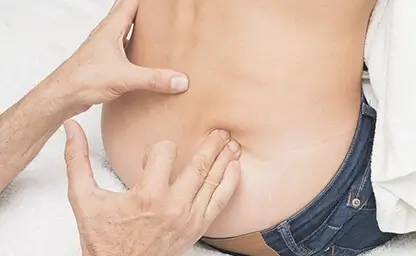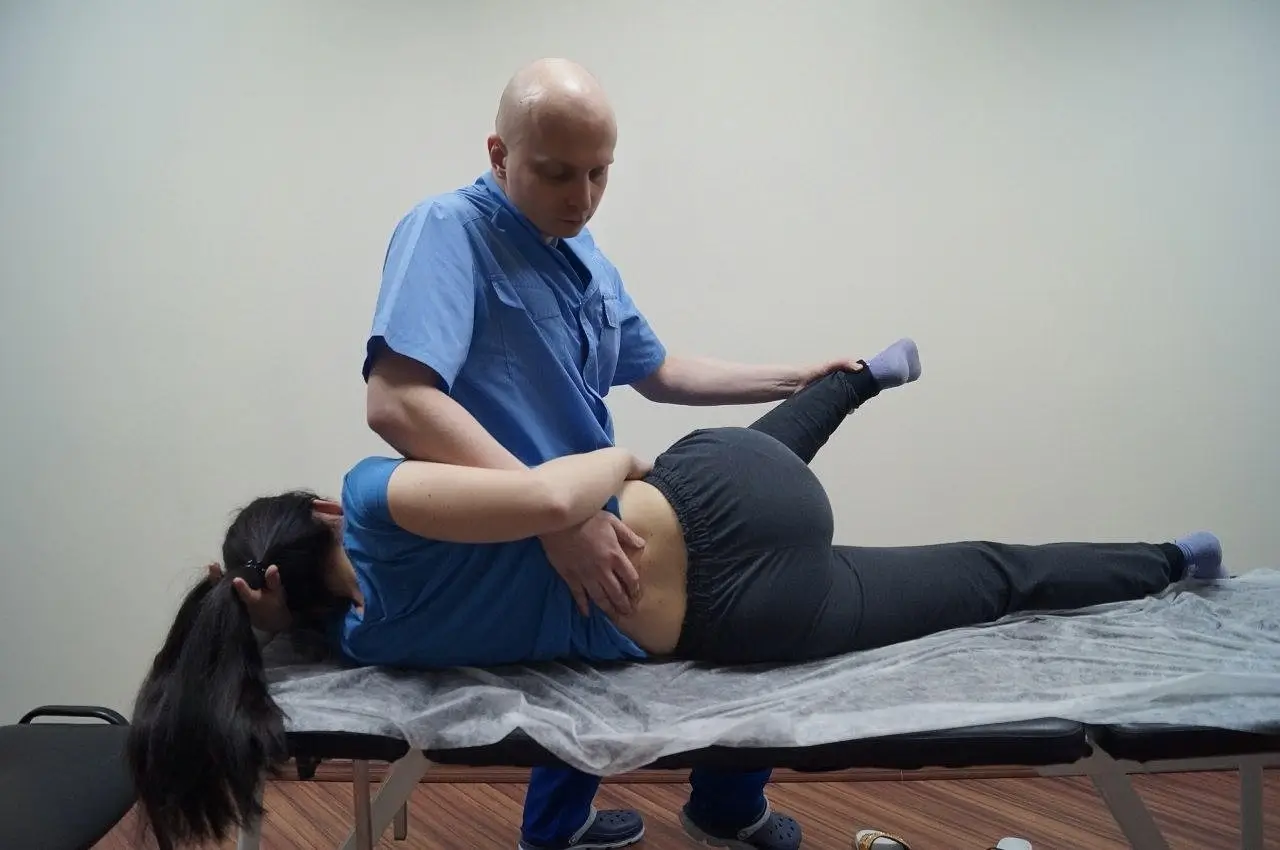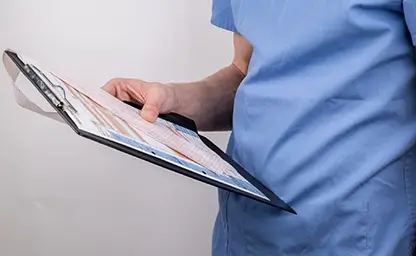

Shoulder pain when hand behind back
32 year old woman. Complains of shoulder pain when putting hand behind back, her arm does not wind up behind her back at all. Suffering for 1.5-2 years. Slowly and gradually developed impairment, started to notice it due to inability to fasten brassiere independently, which bothers her the most. Maximum pain was felt in shoulder joint, especially in front and along the front surface of the arm up to the elbow.
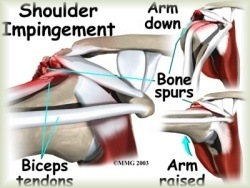 Objective examination: shoulder movements are severely restricted, especially the internal rotation of the humerus. The hand reaches the lateral surface of the pelvis, the arm does not go behind the back (the maneuver causes sharp pain in the shoulder). Movement in the clavicular-acromial and sternoclavicular joints is limited. Palpation of shoulder rotator cuff muscles: sharp painfulness of infraspinatus muscles (when pressing them, pain is reproduced deep in the shoulder and on the front surface of the arm), levator scapula muscles ("as if you press on the nerve"), teres minor and supraspinatus muscles.
Objective examination: shoulder movements are severely restricted, especially the internal rotation of the humerus. The hand reaches the lateral surface of the pelvis, the arm does not go behind the back (the maneuver causes sharp pain in the shoulder). Movement in the clavicular-acromial and sternoclavicular joints is limited. Palpation of shoulder rotator cuff muscles: sharp painfulness of infraspinatus muscles (when pressing them, pain is reproduced deep in the shoulder and on the front surface of the arm), levator scapula muscles ("as if you press on the nerve"), teres minor and supraspinatus muscles.
Diagnosis: myofascial pain syndrome of shoulder rotator cuff muscles, functional joint blocks of shoulder girdle joints, clearly positive hand behind back shoulder test.
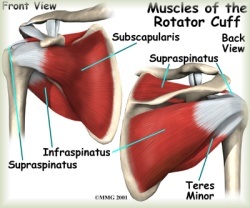 Treatment: technique of progressive pressure and very gentle postisometric relaxation of the affected muscles, muscle energy techniques for clavicular-acromial and sternoclavicular joints, mobilization of the shoulder joint in posterior-distal direction with movement, seven-step Spencer protocol.
Treatment: technique of progressive pressure and very gentle postisometric relaxation of the affected muscles, muscle energy techniques for clavicular-acromial and sternoclavicular joints, mobilization of the shoulder joint in posterior-distal direction with movement, seven-step Spencer protocol.
☛ Myotherapy technique by Travell, Simons.
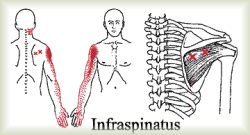 Results: after seven sessions increased volume of movement (the patient can reach the middle of the back), reduced soreness. The patient was given recommendations for independent exercises (PIR, mobilization), organization of the workplace, intake of vitamins and microelements, physiotherapy.
Results: after seven sessions increased volume of movement (the patient can reach the middle of the back), reduced soreness. The patient was given recommendations for independent exercises (PIR, mobilization), organization of the workplace, intake of vitamins and microelements, physiotherapy.
Positive hand behind back shoulder test. Conclusions.
The following is a relatively mild case of disorder of the shoulder joint, when no inflammatory, deforming or traumatic processes have had time to develop and the main complaint was "my shoulder hurts but I can not put my arm behind my back and it hurts to fasten the bra". An extreme variant is frozen shoulder syndrome, when all movements are almost completely restricted. Therefore it is very important to diagnose and treat the patient while there is only functional pathology (dysfunction). Because if you let it develop further, it triggers a whole series of sequential processes.
For example: the dysfunction of one muscle increases the compensatory load on the other, it overstrains and becomes a problem, and so on with the others. This sometimes leads to tension and soreness of all the muscles of the shoulder joint. Tension of the shoulder rotator cuff muscles causes them to pull the humerus inward and upward toward the joint, resulting in trauma to the tissues there (impingement syndrome). The position of the bones in the joint, which differs from the normal position, causes further limitation of its function and traumatization of the tissues, which become inflamed and deformed. This sometimes leads to the unfolded picture of humeral periarthrosis, "frozen shoulder" syndrome. If this condition lasts for years and decades, irreversible changes in the joints appear. This is only a possible option, but it is possible.

Grigori Tafi
Osteopath, sports medicine doctor
15 years of experience in osteopathy and manual therapy. Read more...
☛ Severe pain behind eyes and forehead.
☛ SI joint pain on the left side.
